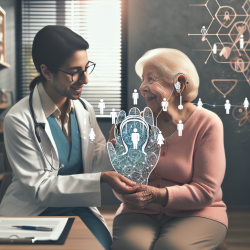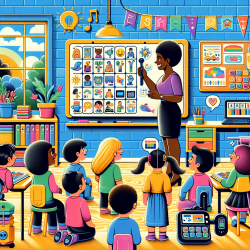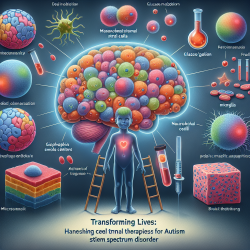Introduction: A Call to Action
As practitioners in the field of speech-language pathology, we are committed to creating optimal environments for children's development. The research article, "Preventing child exposures to environmental hazards: research and policy issues," by Carlson and Sokoloff (1995), highlights critical insights into the impact of environmental hazards on children's health and development. This blog aims to translate these findings into actionable strategies for practitioners, particularly those providing online therapy services like TinyEYE, to enhance their practice and advocate for safer environments for children.
Understanding the Impact of Environmental Hazards
Environmental hazards, ranging from air pollution to chemical exposures, can significantly affect children's health, leading to developmental delays and cognitive impairments. The research underscores the importance of early intervention and prevention to mitigate these risks. As practitioners, understanding the nuances of these hazards allows us to tailor our therapeutic approaches and advocate for necessary policy changes.
Implementing Research Outcomes in Practice
Here are some strategies to integrate the research findings into your practice:
- Awareness and Education: Educate yourself and your clients about common environmental hazards. Use data-driven resources to illustrate the potential impacts on children's health.
- Risk Assessment: Incorporate environmental risk assessments into your initial evaluations. This can include asking questions about the child's living environment, exposure to pollutants, and family history of environmental sensitivity.
- Advocacy: Advocate for policies that aim to reduce children's exposure to environmental hazards. This can involve collaborating with local schools and communities to promote healthier environments.
- Collaboration: Work with other healthcare professionals to develop comprehensive intervention plans that address both environmental and developmental needs.
Encouraging Further Research
While the research provides a foundational understanding, there is a need for ongoing research to explore the long-term effects of environmental hazards on child development. Practitioners are encouraged to contribute to this body of knowledge by conducting their own studies or collaborating with research institutions.
Conclusion: A Shared Responsibility
Protecting children from environmental hazards is a shared responsibility that requires the collective efforts of practitioners, policymakers, and communities. By integrating research findings into practice and advocating for change, we can create safer environments that support children's health and development.
To read the original research paper, please follow this link: Preventing child exposures to environmental hazards: research and policy issues.










